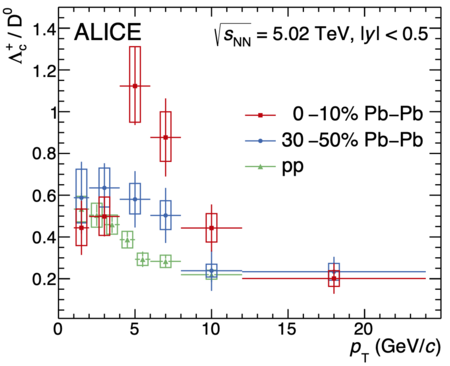
A fundamental open question in particle physics concerns how hadrons are formed from quarks, especially in the quark-gluon plasma produced in nucleus-nucleus collisions. Open heavy-flavour production offers unique insights into the nature of the QGP medium and its hadronisation, in particular through the measurement of the baryon-to-meson production ratio. A significant enhancement of the Λc+/D0 ratio in heavy-ion collisions is predicted by theoretical models that include modified hadronisation mechanisms with respect to the expected ratio in pp collisions. The measurement of such ratio in small hadronic collision systems showed surprising features as well, not yet fully understood.
The production of prompt Λc+ baryons was measured with the ALICE detector in Pb-Pb collisions at 5.02 TeV, as well as the Λc+/D0 ratio and nuclear modification factor. The measurement is performed in finer centrality classes than previous measurements and spans a new kinematic region, allowing for an extrapolation down to zero transverse momentum for the first time. As presented in the figure, the measured Λc+/D0 ratio increases from pp to central Pb-Pb collisions at intermediate pT. These results were compared with predictions from different theoretical models, and place significant constraints on charm-quark hadronisation.
The upgraded ALICE detector for the LHC Runs 3 and 4 will increase the integrated luminosity by a factor of about 50 and the tracking precision by a factor 3-6, meaning future measurements of Λc+-baryon production will allow for even stronger constraints on the heavy-quark hadronisation mechanisms in heavy-ion collisions.
Further reading:
ALICE Collaboration 2021 https://arxiv.org/abs/2112.08156
